On both hobby farms and commercial farms, fencing plays an important role in confining and protecting animal and crop areas. Your choice of the fence should be based on what purpose it is for. There are dozens of different fencing products that you can choose from. It is an old practice and is carried out in different ways and methods over the generations. Crop protection is very important in agricultural land as it is the ultimate result of all the hard work and perseverance put into the land. Check out cheap farm fence ideas below.
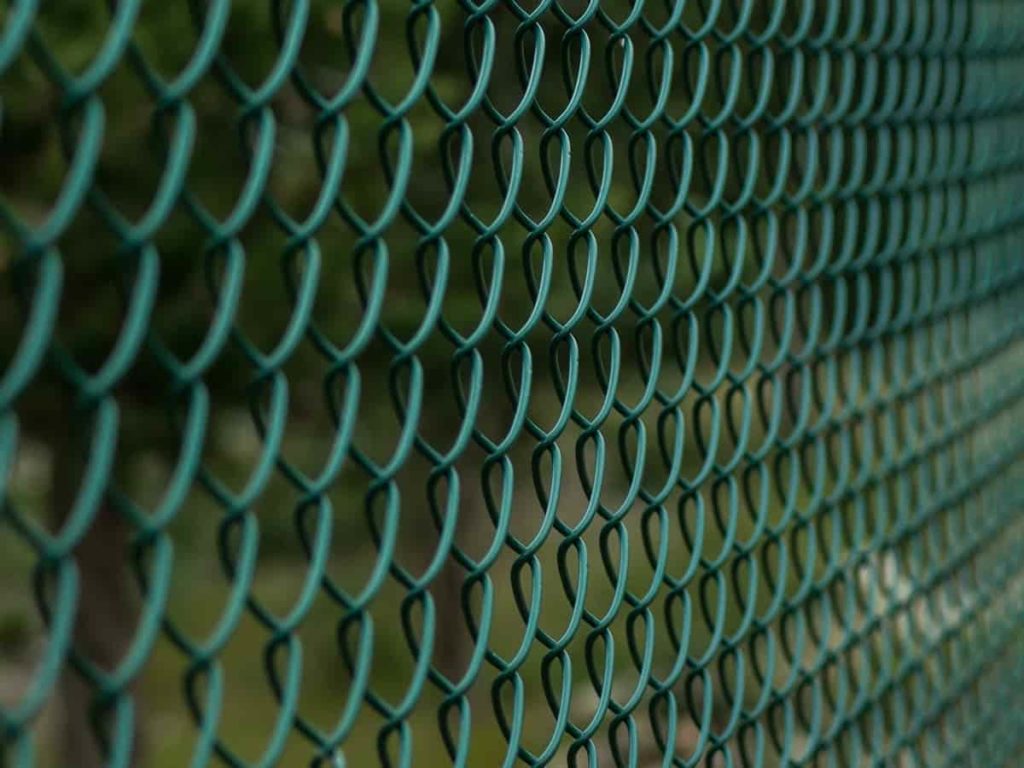
The common problems facing farmers are grazing domestic animals, damaging crops by wild animals, and stealing by passersby. An agricultural fence, also known as a livestock fence or a rustic ranch, is a type of fence used to keep animals such as sheep, horses, pigs, and cattle inside and outside a particular area. Fencing is a one-time investment and provides long-term protection for farmland and property and helps reduce crop damage from a variety of disruptive causes. Check out cheap farm fence ideas below
Cheap farm fence ideas
Chicken wire fencing
This is a small-weave diamond grid pattern of chicken wire fencing used everywhere to protect poultry enclosures. A relatively lightweight 20-gauge wire is woven into a diamond-shaped grid of one to two inches in size. The chicken wire is sold in rolls two to five feet wide. It is useful in preventing foxes, hawks, and other small predators from feeding on poultry, and can also protect orchards.
In case you miss this: Poultry Farm Insurance in India, Companies, Policy, and Premium
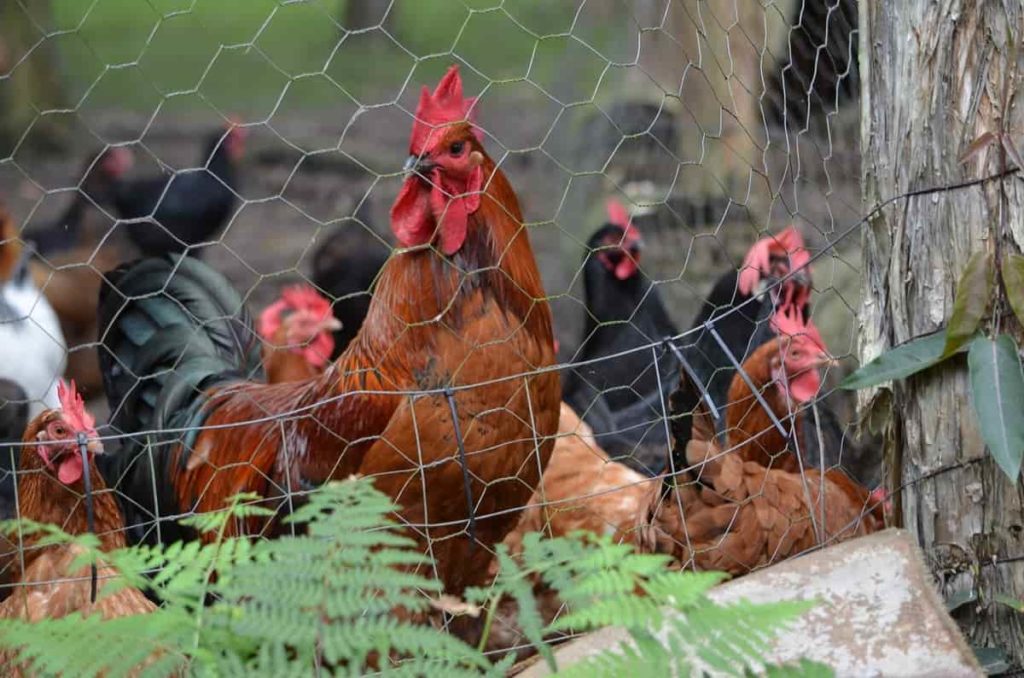
Field fence
This is another type of wire fence, but one that uses heavy gauge wire, in which the joints are tightened to provide extra strength. It is used for cattle, pigs, and other large livestock animals. Sheep, goats, pigs, and poultry is a challenge, as they can climb and dig under many types of fences. A field fence, also called a woven wire fence, is the best option for protecting these animals. It is also effective in containing cattle and horses. Field fences are strong, as they are made of heavy gauge galvanized steel.
Barbed wire
Barbed wire is a classic farm fence for confining cattle, consisting of two or three horizontal edges of reinforced wire with sharp stripes. Wires are tied between metal or wooden lines. Barbed wire works well enough to trap relatively soft animals in large areas, but can be easily violated by large, aggressive animals. They are not very attractive, but they are very effective in their purpose.
Electric fence
An electric fence is an efficient but unappealing fence that uses insulated horizontal wires attached to insulated vertical stripes. In some forms of fencing, an entire wire mesh is electrified – which is especially useful for poultry enclosures, where it can house birds inside and predators out. Electric fences are not particularly dangerous, although brushing against someone can be an unpleasant surprise.
In case you miss this: Solar Power Fencing for Crop Protection, Design, Installation, and Advantages
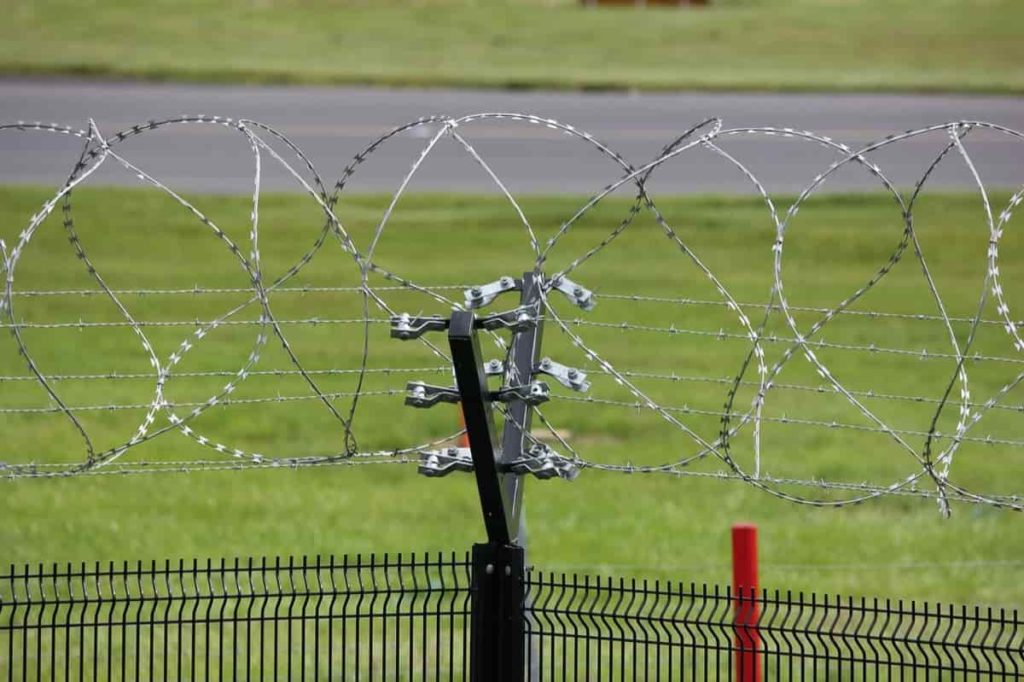
High tensile wire
The high tensile wire is faster than smooth wire, which helps to avoid problems caused by animals leaning against the fence. This type of wire is more expensive but requires very few posts so the overall cost is usually the same. Furthermore, because it is not spread, animals are less likely to become trapped in the wire.
Welded wire
This is made of rigid wires arranged in vertical and horizontal rows in which the joints are welded together. Welds can break, so this type is commonly used for lightweight applications, such as confining small animals or protecting poultry. Welded wire fence is usually made of 16-gauge or 14-gauge wire, and is sold in rolls of 24 inches, 36 inches, 48 inches, or 60 inches wide.
Smooth wire fencing
Smooth wire is the same as barbed wire, without sharp edges. In agricultural fencing, this type of wire has advantages such as eliminating the possibility of lacerations and cuts to animals. Smooth wire is cheap and can be used as an alternative to barbed wire to keep horses.
In case you miss this: 1 Acre Fence Cost In India, Agriculture, Types
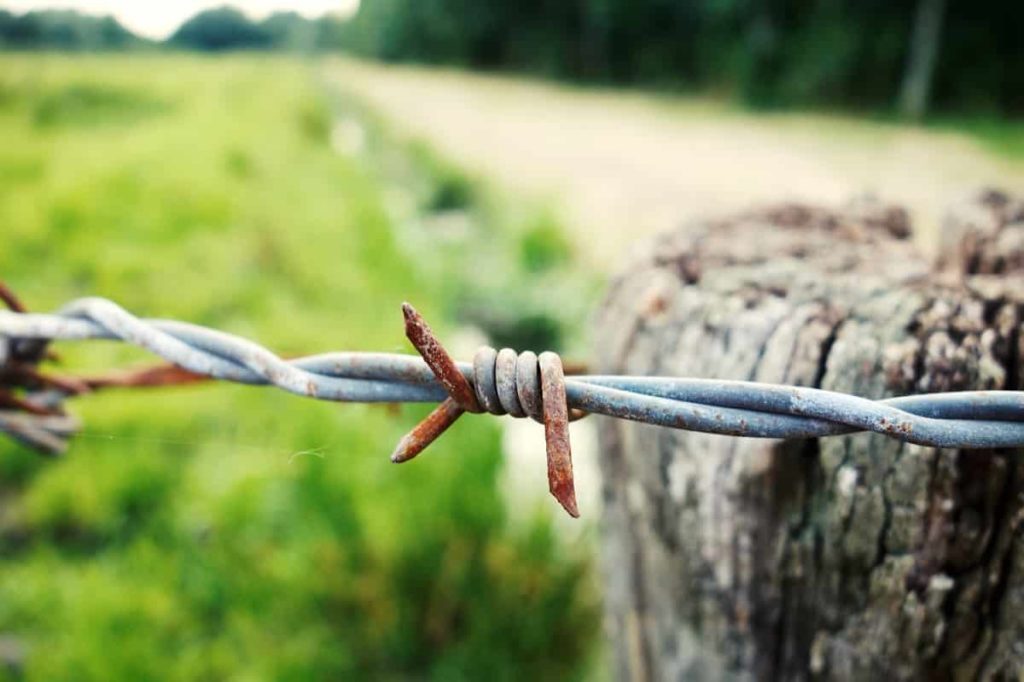
Farm fencing costs
The total cost of updating your farm fence before selling will depend on many factors, including planned land use, local topography, location of the fence, and whether it is a boundary or internal fence. When budgeting for your new field fence you will need to consider the following costs;
- End assemblies and strainer posts
- Intermediate posts (such as Star Pickets)
- Wire or mesh
- Gates and gate hardware
- Machinery costs
- Installation materials costs (Concrete for non-driven posts)
- Labor cost
Different fencing practices for your farm
Horses, cattle, goats, and sheep have different attitudes and tendencies, which require different fencing requirements.
Sheep and Goats
A good fence is recommended, especially with sheep, primarily to prevent problems with predators. This is especially true with sheep because they have heavy wool that protects them from electric shocks. Because sheep and goats are small in stature, the wires must be close to the ground and need to be cleared of vegetation to reduce grounding and maintain a good electrical charge in the system. Special electrical nets for sheep and goats have proven to be very effective.
Cattle
These large animals adapt easily to the electric fence and do not require fewer wires or wires on the ground like small animals. The age of the animal determines the number of wires that are best for the fence. It should be noted that the fence should be in good condition when the bulls are present. The same wire can fit well with well-trained animals.
In case you miss this: Dairy Disease Symptoms and Treatment for Cows, Cattle, Goats, and Sheep
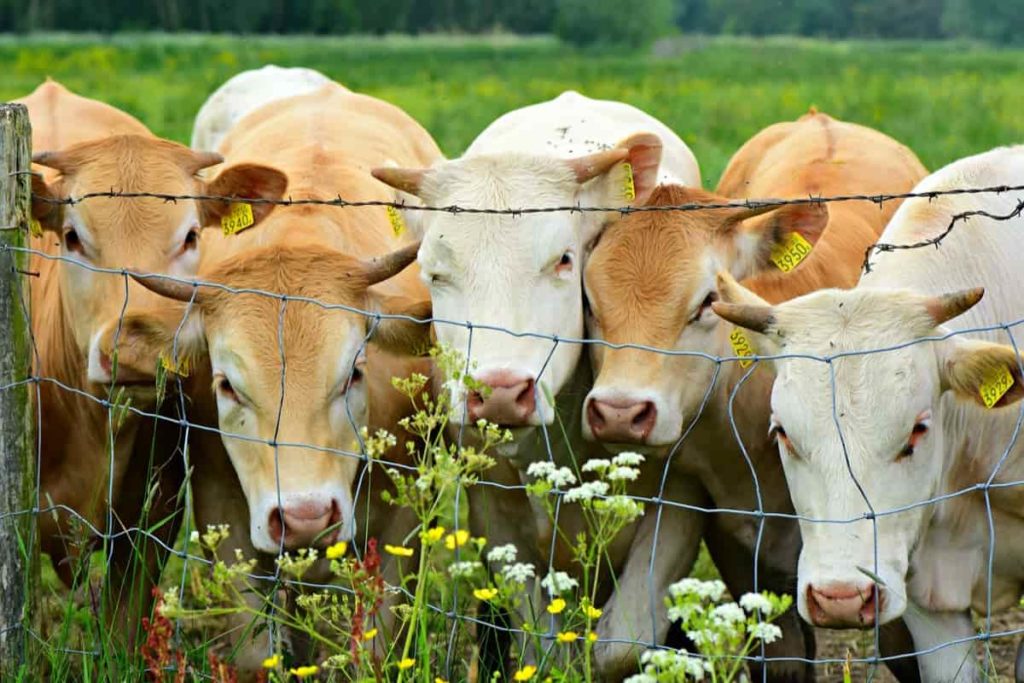
An electrically conductive plastic twine, commonly called poly wire, is easy to erect and remove and is ideal for rotating grazing. Cattle have tough skins and use that usually do not pay much attention to the physical performance of animals like horses. Thus, cattle with different types of enclosures are more forgiving (or, rather, more durable). Barbed wire is still a risk factor for skin lesions, but cattle tend to be as blind to panic as horses.
Horses
Horses are fast-moving animals and need a more visible fence than other animals. Electrified tape is more visible than poly wire. Horses are also very sensitive to electric shocks and can be unpredictable. Therefore, when choosing a fence, it is important to keep in mind that horses can get entangled in the wire and get injured. Talk to a fence specialist, especially one who is familiar with horses.
Others
There are many fencing products designed specifically for animals such as alpacas, llamas, and rabbits.
How much fence do I need?
The rolls of fence depend on the type of fence you are buying. Red brand barbed wire fences and red brand field fences are available in different roll lengths. If you’re buying barbed wire, a roll equals 1,320 feet of fence or 1/4 mile. Therefore, for a 40-acre area that requires 1/4-mile fencing on each side, you will need a one-mile fence or four rolls of barbed wire per line.
In case you miss this: Sheep Farm Insurance in India, Companies, Policy, and Premium
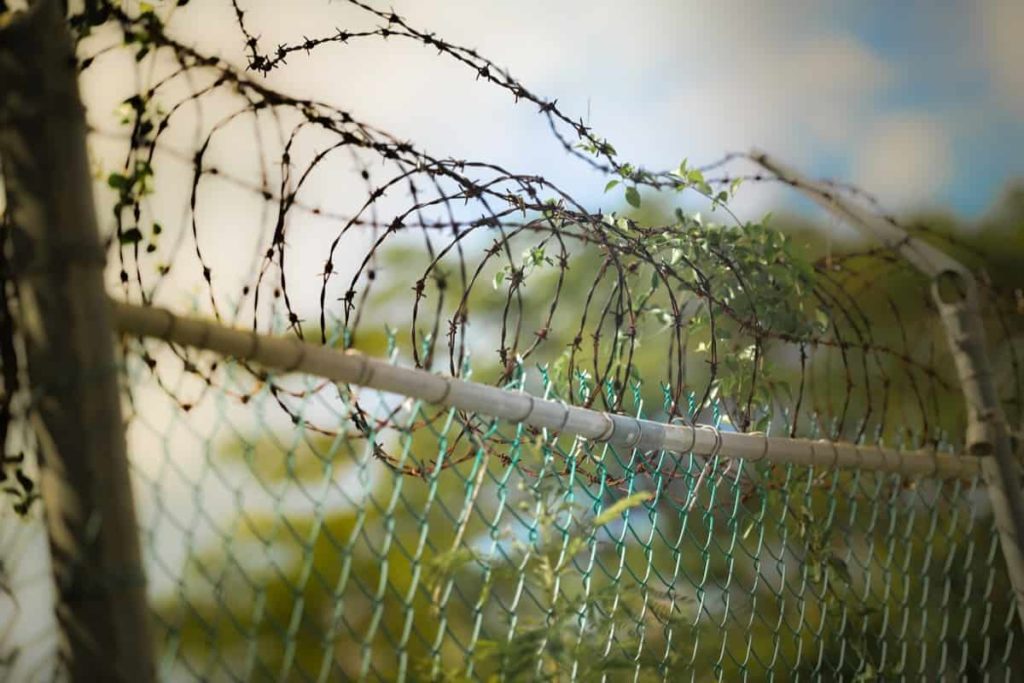
However, if you have chosen a field fence, you will need four 330-foot rolls for every 1/4 mile of the fence line, or the equivalent of one roll of barbed wire. A total of 16 rolls vs. four rolls of barbed wire will be required for fencing in a 40-acre parcel. Of course, these estimates are based on an area of 40 acres. Many times, you will be enclosing an area of different sizes which may require more fencing.
How much-barbed wire need for a 10-acre fence?
The amount will vary depending on the shape of the fence that you build. For a square fence, you can calculate an average of 1,867 feet for 5 acres and 3,734 feet for 10 acres.
Cost of the barbed wire fencing
Low-cost fences are recommended when the main purpose is simple demarcation or boundary lining of the property. The most commonly used low-cost fence type is barbed wire because it is readily available and easy to install. There are three types of barbed wire in the country;
- PVC coated barbed wire
- GI barbed wire
- Polymer barbed wire
GI barbed wire is considered to be the most common, while PVC coated is mainly used in coastal areas or such places. Where there is a lot of moisture. The PVC coated barbed wire we supply is known for its high quality, which is much more durable than its other counterparts in the market. Polymer barbed wire is used where fencing work is to be done in remote areas and high product life is required.
Cost of fencing per running meter perimeter of the farm = Rs. 192 to 230.1
These costs may vary depending on many factors such as labor charges, wire cost, length of the farm, etc.
Cost of solar fencing
Not only are they considered safe and effective but they are also one of the least expensive fencing options. Approximately the cost per running meter of 7 rows fence is Rs. 396/meter.
- Types of Pesticides Used in Agriculture: A Beginner’s Guide
- Economical Aquaculture: A Guide to Low-Budget Fish Farming
- 15 Common Planting Errors That Can Doom Your Fruit Trees
- How to Make Houseplants Bushy: Effective Tips and Ideas
- Innovative Strategies for Boosting Coconut Pollination and Yield
- Pollination Strategies for Maximum Pumpkin Yield
- The Complete Guide to Chicken Fattening: Strategies for Maximum Growth
- Natural Solutions for Tulip Problems: 100% Effective Remedies for Leaf and Bulb-Related Issues
- Revolutionizing Citrus Preservation: Towards a Healthier, Greener Future
- Natural Solutions for Peony Leaf and Flower Problems: 100% Effective Remedies
- Maximizing Profits with Avocado Contract Farming in India: A Comprehensive Guide
- Natural Solutions for Hydrangea Problems: 100% Effective Remedies for Leaf and Flowers
- The Ultimate Guide to Choosing the Perfect Foliage Friend: Bringing Life Indoors
- From Sunlight to Sustainability: 15 Ways to Use Solar Technology in Agriculture
- The Ultimate Guide to Dong Tao Chicken: Exploring from History to Raising
- The Eco-Friendly Makeover: How to Convert Your Unused Swimming Pool into a Fish Pond
- Mastering the Art of Delaware Chicken Farming: Essentials for Healthy Backyard Flocks
- 20 Best Homemade Fertilizers for Money Plant: DIY Recipes and Application Methods
- How to Craft a Comprehensive Free-Range Chicken Farming Business Plan
- Brighten Your Flock: Raising Easter Egger Chickens for Beauty and Bounty
- How to Optimize Your Poultry Egg Farm Business Plan with These Strategies
- Subsidy for Spirulina Cultivation: How Indian Government Schemes Encouraging Spirulina Farmers
- Ultimate Guide to Raising Dominique Chickens: Breeding, Feeding, Egg-Production, and Care
- Mastering the Art of Raising Jersey Giant Chickens: Care, Feeding, and More
- Ultimate Guide to Raising Legbar Chickens: Breeding, Farming Practices, Diet, Egg-Production
- How to Raise Welsummer Chickens: A Comprehensive Guide for Beginners
- How to Protect Indoor Plants in Winter: A Comprehensive Guide
- Ultimate Guide to Grow Bag Gardening: Tips, Tricks, and Planting Ideas for Urban Gardeners
- Guide to Lotus Cultivation: How to Propagate, Plant, Grow, Care, Cost, and Profit
- Agriculture Drone Subsidy Scheme: Government Kisan Subsidy, License, and How to Apply Online
- Ultimate Guide to Raising Araucana Chickens: Breed Profile, Farming Economics, Diet, and Care
- Bringing Hydroponics to Classroom: Importance, Benefits of Learning for School Students
- Ultimate Guide to Raising Polish Chickens: Breed Profile, Farming Economics, Diet, and Care
- Ultimate Guide to Raising Australorp Chickens: Profile, Farming Economics, Egg Production, Diet, and Care
- Silkie Chicken Farming: Raising Practices, Varieties, Egg Production, Diet, and Care
- Sussex Chicken Farming: Raising Practices, Varieties, Egg Production, Diet and Care
About fencing
I am interested to have fencing to our farm located in vizag.
Call me with details